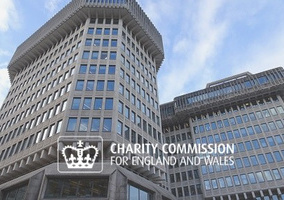When it comes to environmental, social and governance (ESG) investment, there are many different approaches, and it is not always clear what they are.
“Many managers say that the assessment of ESG factors is integrated,” says Stefan Rheinwald, head of equity research and Japan at Waverton Investment Management. “But often the processes are separated, with a specialist ESG team advising the investment decision makers. However, our approach is truly integrated; we have asset class and regional equity specialists that know the companies intimately, looking at the fundamentals including ESG factors. It’s the investment professionals who analyse and formulate our view of a company, taking into account all risks and opportunities when making an investment decision, including those related to ESG.
“The person looking at a company from an ESG perspective is a company specialist who implements the ESG integration and not the other way around. If you have a separate team, looking at ESG factors in isolation, who know little about the fundamental drivers of the business and its direction of travel, that context gets lost and can result in unintended outcomes. We firmly believe the consideration of ESG factors is not a separate process but rather a natural part of good fundamental investment research.”
Materiality framework
ESG integration at Waverton is informed by a materiality framework mapped against Global Industry Classification Standards (GICS). And, although the teams have access to MSCI ESG ratings and research, which can provide some useful reference points, they are not a decision driver.
Rheinwald explains: “We defined material ESG metrics for each industry group based on factors under five sustainability pillars: leadership and governance, business model and innovation, human capital, social capital and the environment. Focusing on material ESG issues when evaluating a company’s performance with regard to ESG factors is a far more effective way to assess real world environmental and social outcomes.”
Rheinwald uses the example of a brewing company where the use of water and management of wastewater is highly relevant to the operations and competitiveness of the manufacturer, where there are both operational and environmental implications. This is not true for, say, a social media company. “In this case, our focus is better placed on the effectiveness of data security systems and the treatment of user data, rather than its use of water and management of wastewater, which has little relevance to a digital platform’s business model. Issues that compromise the security and privacy of its user data have social consequences, and could potentially undermine the company’s long-term financial viability.
“So, the ESG metrics for each company in the relevant industry groups vary. If the business is in fast fashion then that looks different to a bank, and that’s different again for a chemical company. We have identified those material aspects to more accurately evaluate each company.”
Rheinwald adds: “This approach has been integrated into the investment process of our direct equity and fixed income teams, and we introduced a similar framework for our alternatives team in 2023, where applicable.”
How this effects charity decisions
These processes are reflected in client portfolios irrespective of what a charity wants to do with its investment strategy, or what it wants to emphasise/avoid within its investment mandate, says James Pike, Waverton’s head of charities. “However, when we are building a portfolio for a client, we take the recommendations from the Investment Team and then take into account any nuances that we need to reflect in the portfolio ensuring that it meets the needs of that particular client. The fact that ESG is fully integrated into our investment process anyway, gives charities a lot of comfort.”
This level of integration allows clients to gain a more holistic understanding of their portfolio, allowing for stable returns while remaining true to their investment mandates. “We assess all kinds of risks underneath the responsible investment umbrella,” says Pike. “If a charity wants to exclude companies with particular exposures, we can overlay that in the portfolio; but we start with the core fundamental process.”
Also, it helps clear up discrepancies or risk exposure that can arise when it comes to ESG ratings. “It can be confusing as different rating agencies use different methodologies,” continues Pike. “Careful consideration is needed as the tendency may be to put a company with a high rating in a portfolio to boost the ESG score. But, it is crucial to look beyond that to see if the metrics are reliable and accurate. It is necessary to dig down into these things, but not all managers do”.
It’s important to look at the trajectory that a company is on and not rely solely on its current rating, adds Pike. “Some companies may score badly now but if governance standards are changing, then you can get some potentially strong returns as they gain momentum and the rating catches up with their progress. Investment decision-making needs to accommodate that.”
Rheinwald concludes: “A rating is an output. We don’t start with the output; we start with the input. If you look through our portfolios they all have a better aggregate rating than the index. We believe that is testimony to the effectiveness of our integrated and forward-looking approach. We undertake thorough due diligence before we come to an investment conclusion. Our fundamental bottom-up approach allows us to judge a company’s value, rather than starting with a score or rating the derivation of which we don’t fully understand and where we know that the methodology is sometimes flawed.”
Better understanding
Although investing ethically has been a consideration for many charities for some time, it is still a complex process, and good quality ESG analysis goes far beyond that, says Pike. “There is often a spotlight on charities: what are they funding? Is their stance on ESG within their investment policy aligned with the core objectives of the charity? Are donors’ values aligned with those of the charity? Trying to balance this scrutiny while targeting strong returns can be challenging. There’s so much to digest.”
He says that underscoring the importance of an integrated process and articulating that to clients is vital to bringing clarity to the influence of ESG factors when investing. “The more transparent and open we can be about the companies we buy and the way we run portfolios, the more we can help charities navigate what can be a very cloudy and confusing subject.”
Fast facts
£10.9bn assets under management of which £1.2bn is charitable assets*
Global. Active. Direct. Flexible
Integration of ESG factors into fundamental analysis
PRI and UK Stewardship Code signatory
Complimentary trustee training and workshops
What we do
Waverton is an award-winning discretionary investment management firm providing portfolios that are directly invested, actively managed and truly global. Our dedicated Charity Team combines this investment approach with a highly personalised service to provide investment solutions that are tailored to each client’s specific needs.
An interview with James Pike, head of charities and Stefan Rheinwald, head of equity research and Japan at Waverton












